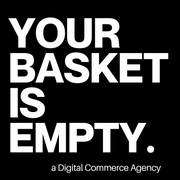Demystifying the world of Headless Commerce by unpacking the who, what, how and why with agency and tech leaders…
With Marcin Nogal, co-founder and Design Lead at Shopstory  - a visual builder for Headless eCommerce. It empowers product teams to build new content pages in hours, not weeks.
- a visual builder for Headless eCommerce. It empowers product teams to build new content pages in hours, not weeks.
Prior to founding Shopstory, Marcin led an eCommerce agency Commerce-UI. He has over 10 years of experience in the DTC, helping brands like Oura Ring, Rolex or Liftfoils shape their digital presence.
How would you describe Headless to an alien?
Headless is a way to separate the visual layer (how your eCommerce looks) from the eCommerce backoffice (managing products, stock, prices, orders etc.). By doing this you open up for modern web technologies used by companies like Nike, Tiffany or Warby Parker.
What are the top three pain points Headless solves for a brand?
Limited visual flexibility, performance issues (my website is slow) and inability to move fast (I can’t keep up with my competition).
When is a good time for a brand to consider a move to Headless?
From our experience, it used to be $2M+ ARR, but with new tools (like Shopify’s Hydrogen + Oxygen) the barrier of entrance is getting lower every month. Soon it’ll be as simple as building a liquid Shopify (or even simpler) store and for any ambitious brand it’ll be a new default.
How does your agency or tech fit into the Headless ecosystem?
We came from the software development world, where technologies like React or next.js (used in Headless) are already an obvious choice. It’s what all big brands like Netflix, Ikea or Nike use. Going headless was foundational for us, even though it wasn’t an obvious path a couple of years ago. With Shopify’s rollout of Hydrogen and their investment in headless CMS Sanity we have no doubt that it was the right choice.
What’s your go-to Headless stack?
React, next.js, Shopify Plus, Sanity + Vercel/Netlify.
Any final thoughts?
We think the term Headless is unnecessarily complex and focuses too much on technical aspects, whereas problems it solves are familiar for any eCommerce brand today. There is some movement around coining a new term “composable commerce”, which seems to be more accessible for non-technical people.
WHERE’S YOUR HEAD AT? 🧠
